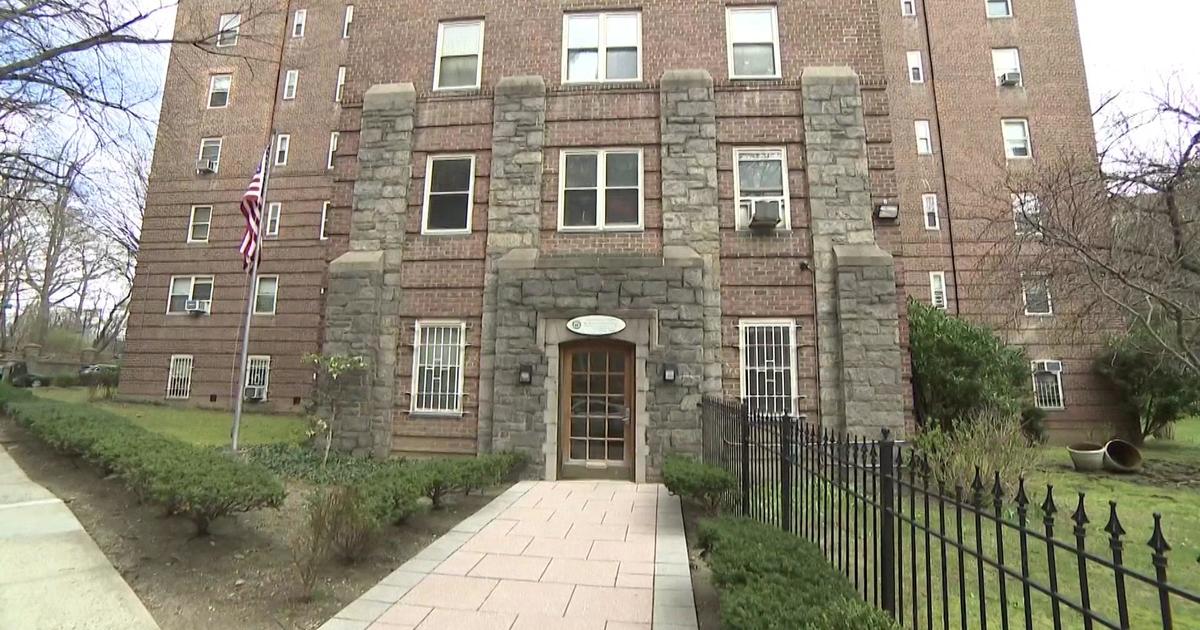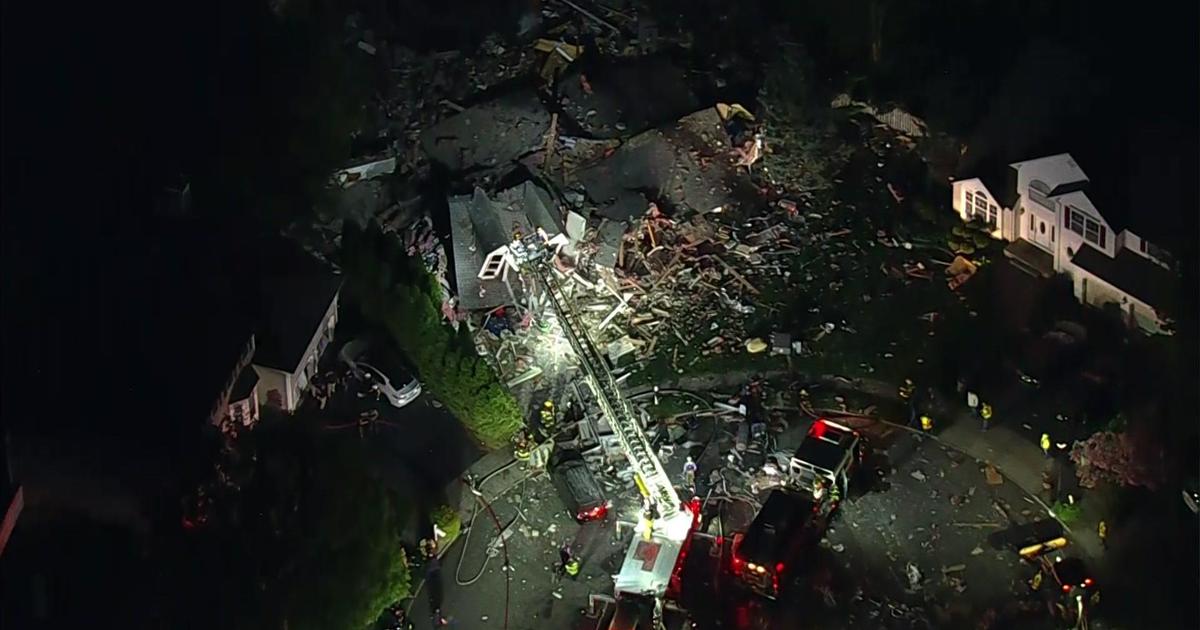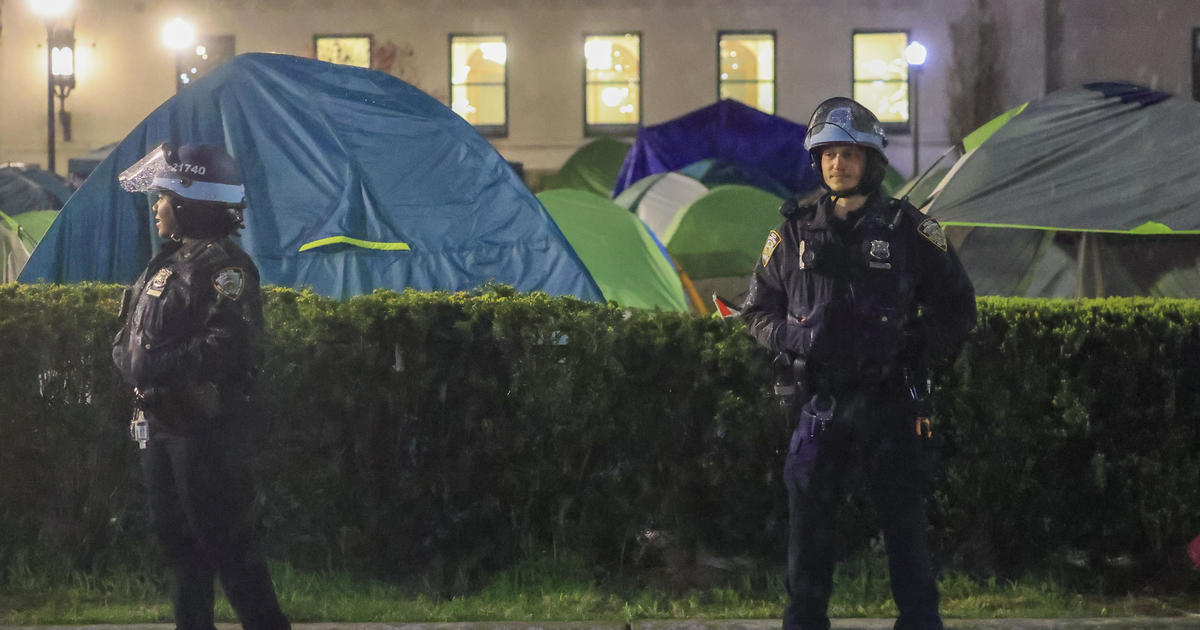Presidential Task Force On Superstorm Sandy Issues Report
NEW YORK (CBSNewYork/AP) - A presidential task force charged with developing a strategy for rebuilding areas damaged by superstorm Sandy has issued a report recommending 69 policy initiatives, most focused on a simple warning: Plan for future storms in an age of climate change and rising sea levels.
The report released Monday by the Hurricane Sandy Rebuilding Task Force says coastal communities should assume floods are going to happen more frequently and realize that spending more now on protective measures could save money later. It calls for development of a more advanced electrical grid less likely to be crippled in a crisis, and the creation of better planning tools and standards for communities rebuilding storm-damaged areas.
Presidential Task Force On Superstorm Sandy Issues Report
"Decision makers at all levels must recognize that climate change and the resulting increase in risks from extreme weather have eliminated the option of simply building back to outdated standards and expecting better outcomes after the next extreme event,'' the report says.
Some of the group's key recommendations are already being implemented, including the creation of new flood-protection standards for major infrastructure projects built with federal money and the promotion of a sea-level modeling tool that will help builders and engineers predict where flooding might be an issue in the future.
The task force also endorsed an ongoing competition, called "Rebuild by Design,'' in which 10 teams of architects and engineers from around the world are exploring ways to address vulnerabilities in coastal areas.
Some along Long Island's Nautical Mile said getting help after a storm is critical.
"How to go about getting help from the government faster than we did last time, because it was very slow," a waterfront Freeport homeowner told WCBS 880 Long Island Bureau Chief Mike Xirinachs. "We've got to find out how to rectify the problem once it's already done."
Meanwhile, residents in the Rockaways told CBS 2's Hazel Sanchez that they're skeptical the report will have much impact on the area in future storms, and added they are still looking for federal aid following Sandy.
"They talked about putting up a wall. I don't know how that would help," said Eileen Meakim, who has not returned to her Breezy Point home after it was buried under seven feet of water in Sandy.
Added Greg Reinhardt, of the Rockaways: "Everybody's still waiting on FEMA funds. Everybody's still waiting on their flood insurance funds. No one has it. No one can find them!"
President Barack Obama created the task force in December. Its chairman, Secretary of Housing and Urban Development Shaun Donovan, said in a statement that the group focused on finding ways to cut red tape in the delivery of disaster aid and "piloting innovative strategies that can serve as a model for communities across the nation as they prepare for the impacts of climate change.''
"The real message here is if we build smart, if we build resilience into communities, we can live along the coast. But we can do it in a way that saves lives and also protects taxpayer investments," said Donovan in a joint press conference with Mayor Michael Bloomberg in Brooklyn on Monday.
Presidential Task Force On Superstorm Sandy Issues Report
In its report, the task force didn't delve deeply into what types of infrastructure might be best suited to protect the shoreline. It endorsed a greater use of natural barriers like wetlands and sand dunes, but said better tools were needed to help planners evaluate what works and quantify the long-term cost benefits of those types of green projects. It also said those projects should be planned regionally if they are to have their greatest effect.
It said the government should find ways to encourage the private-sector development of fuel distribution and telecommunications systems less likely to be crippled by extended power outages. After Sandy, drivers in New York and New Jersey had problems finding gas stations that still had fuel because of a series of problems that rippled through the distribution system.
Mobile phone networks were snuffed out in some areas because of equipment that lacked adequate battery power, or other backup electrical supplies.
A large section of the report dealt with how federal authorities should respond once a storm has struck.
Among the recommendations:
- Federal agencies should streamline their review processes for reconstruction projects related to Sandy. It said that if standard government permitting timelines are applied, some rebuilding projects might have to undergo redundant reviews by multiple agencies and could be held up as long as four years. Some of those reviews will be consolidated to save time and money, the task force said.
- The Small Business Administration's disaster loan program, which gave $3.8 billion in low-interest loans to storm victims, performed better than it did during Hurricane Katrina but should be tweaked further. Training programs for loan officers should be improved. Eligibility for some loans should be loosened slightly. Approvals should happen faster for people who meet credit requirements. A separate application track should be established for small businesses, which often need money fast to survive but wind up languishing in long queues behind huge numbers of homeowners.
- Federal mortgage policies should be revised so homeowners can get insurance checks faster. After Sandy, many homeowners complained that mortgage banks delayed delivering their insurance payments because of bureaucratic issues.
On one vital issue related to insurance, the task force had no easy solution.
It noted that because of reforms to the financially distressed National Flood Insurance Program that began before the storm, many thousands of people who live in low-lying areas will likely see huge premium increases if they don't lift their homes up on pilings. The task force said that for many homeowners, both options will be unaffordable. It recommended further study of that dilemma.
"The insurance companies, all that. I mean, the government's got to tell us how to do that quicker or they got to modify their reactions," the homeowner told Xirinachs.
You May Also Be Interested In These Stories
(TM and © Copyright 2013 CBS Radio Inc. and its relevant subsidiaries. CBS RADIO and EYE Logo TM and Copyright 2013 CBS Broadcasting Inc. Used under license. All Rights Reserved. This material may not be published, broadcast, rewritten, or redistributed. The Associated Press contributed to this report.)



